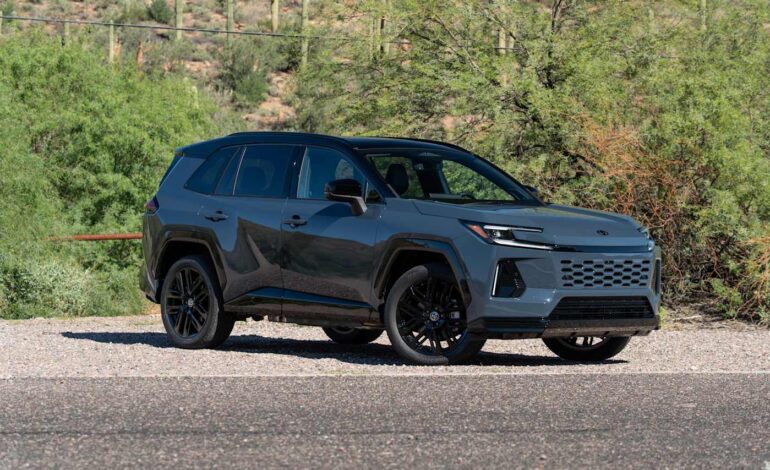Toyota Unveils Enhanced All-Hybrid RAV4 with Innovative Software

The launch of the 2026 Toyota RAV4 marks a significant step forward in vehicle software, integrating features designed to enhance user experience comparable to modern smartphones and tablets. The new all-hybrid SUV comes equipped with an upgraded software system that delivers both voice and touch capabilities that are notably quick and user-friendly. This release follows the previous model’s success, which became the world’s best-selling car in 2024, with over 1.1 million units sold.
As the sixth generation of the RAV4, the latest iteration retains the familiar characteristics that have made it popular while incorporating several enhancements. Each trim is now a hybrid, starting with a 2.5-liter four-cylinder engine that powers the front wheels and delivers 226 horsepower. For those desiring all-wheel drive, an additional electric motor can be added to increase power by 10 horsepower, improving traction in low-grip situations.
The revised plug-in hybrid model boasts impressive performance with a total of 324 horsepower, an increase of 22 from its predecessor. Fuel economy reaches up to 48 mpg, and the plug-in variant offers a range of 52 miles on a 22.7 kWh battery. During a test drive of the RAV4 XSE plug-in edition, it was possible to travel nearly 20 miles without engaging the gasoline engine, showcasing its usability for short trips.
Despite these advancements, there are some drawbacks. The vehicle uses a CCS port for DC charging, which supports a maximum of 50 kW, rather than the newer NACS ports being adopted by many manufacturers. Additionally, the absence of vehicle-to-load functionality is a missed opportunity, particularly for the rugged Wilderness edition, which could ideally serve outdoor enthusiasts.
Inside, the RAV4 features a new software system displayed on either a 10.5-inch touchscreen in lower trims or a 12.9-inch display in higher-end models. The interface is familiar, with a vertical column of icons for easy navigation, and it includes customizable panels that allow users to rearrange the layout according to their preferences.
The responsiveness of the system is commendable, with quick swiping between pages and an efficient voice assistant that responds rapidly to commands. Using the phrase “Hey, Toyota,” users can request information or navigation without experiencing the common delays found in other systems. This may be attributed to the integration of 5G connectivity provided by AT&T, alongside improved hardware.
A standout feature is the integrated dashcam, which records incidents on the road while also storing footage from the SUV’s cameras. In addition to the touchscreen interface, physical controls for key functions remain, including a volume knob, thus enhancing the overall user experience. Both wireless Android Auto and Apple CarPlay are supported, allowing navigation details to be streamed to the 12.3-inch digital gauge cluster.
The cabin is spacious and designed for comfort, featuring durable materials that can withstand wear and tear. Although the driving dynamics do not transform the RAV4 into a high-performance vehicle, the additional power in the plug-in hybrid trim feels adequate. The introduction of a new GR Sport edition aims to appeal to those seeking a more engaging driving experience, yet it retains the RAV4’s practical character.
While pricing details remain undisclosed, Toyota indicates that the new RAV4 will start in the low $30,000 range. The combination of an enhanced software experience and the SUV’s existing virtues promises to maintain the RAV4’s strong market position. As consumers increasingly seek practicality and comfort in their vehicles, the 2026 RAV4 stands poised to meet those demands without disappointing.






